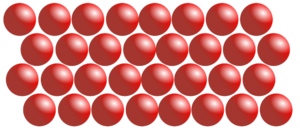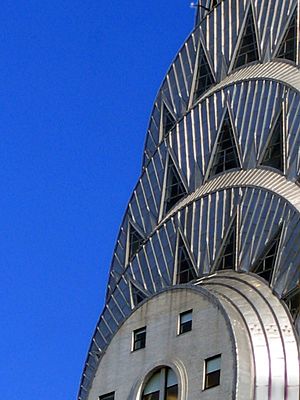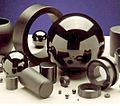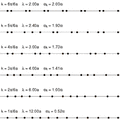Solid facts for kids
A solid is one of the three main states of matter. In solids, the tiny molecules are packed very close together. They can only vibrate in place, like shaking in one spot. This is why solids have a fixed shape that doesn't change unless you push or pull on them with a force. This is different from liquids and gases, where molecules move around freely, which is called flow.
When a solid gets hot enough, it can turn into a liquid. This process is called melting. When a liquid gets cold enough, it turns back into a solid; this is called freezing. Some special solids, like dry ice, can turn directly into a gas without ever becoming a liquid first. This cool process is known as sublimation.
Contents
What are the different types of solids?
The tiny forces holding atoms together in a solid can be different. For example, a crystal of table salt (which is sodium and chlorine) is held together by ionic bonds. In a diamond or silicon, the atoms share their electrons to form strong covalent bonds. In metals, electrons are shared in a special way called metallic bonding. Some solids, like many organic materials, are held together by weaker "van der Waals forces." The way these atoms are connected makes each type of solid unique.
Metals: Strong and useful solids
Most metals are very strong, heavy, and great at letting electricity and heat pass through them. If you look at the periodic table, most of the elements on the left side are metals. When two or more elements are mixed together, and the main part is a metal, it's called an alloy.
People have been using metals for thousands of years, even since ancient times. Because metals are so strong and reliable, they are used everywhere. We use them to build buildings, vehicles, many tools, pipes, road signs, and railroad tracks. Iron and aluminium are the most common metals used today. They are also the most common metals found in the Earth's crust. Iron is often used as steel, which is an alloy with a little bit of carbon. This makes steel much harder than pure iron.
Since metals are good at conducting electricity, they are very important for electrical devices. They also help carry electric current over long distances without losing much energy. This is why power grids use metal cables to deliver electricity. For example, the electrical systems in homes are often wired with copper because it conducts electricity so well. Metals also conduct heat very well, which is why they are great for cooking utensils.
Minerals: Nature's crystals
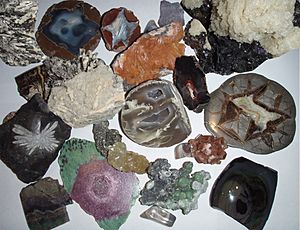
Minerals are natural solids that form deep inside the Earth through many geological processes, often under high pressure. To be a true mineral, a substance must have a specific crystal structure and the same physical properties throughout. Minerals can be simple elements or complex salts. Some, like silicates, can be very complicated with thousands of known forms.
In contrast, a rock is usually a mix of different minerals and doesn't have a specific chemical makeup. Most rocks in the Earth's crust contain minerals like quartz, feldspar, mica, and calcite. Some minerals, like quartz, are very common, while others are found in only a few places around the world. The largest group of minerals is the silicates, which make up over 95% of most rocks. They are mostly made of silicon and oxygen, along with other metals like aluminium and iron.
Related pages
| Mechanics | ||||||||||
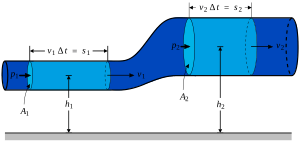
|
||||||||||
Images for kids
-
Single crystalline form of solid insulin.
-
A high strength glass-ceramic cooktop with very little thermal expansion.
-
The individual wood pulp fibers in this sample are around 10 µm in diameter.
-
STM image of self-assembled supramolecular chains of the organic semiconductor quinacridone on graphite.
-
Simulation of the outside of the Space Shuttle as it heats up to over 1500 °C during re-entry.
-
A cloth of woven carbon fiber filaments, a common element in composite materials.
-
Normal modes of atomic vibration in a crystalline solid.
See also
 In Spanish: Sólido para niños
In Spanish: Sólido para niños


